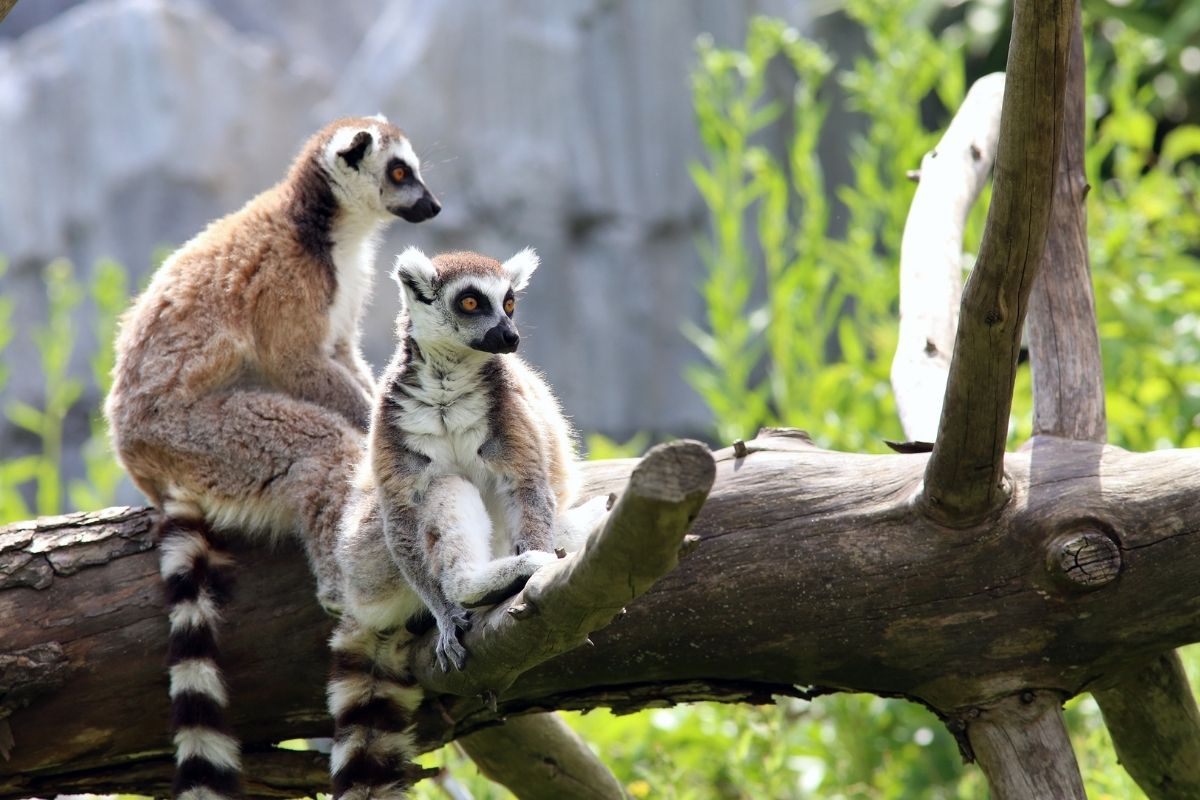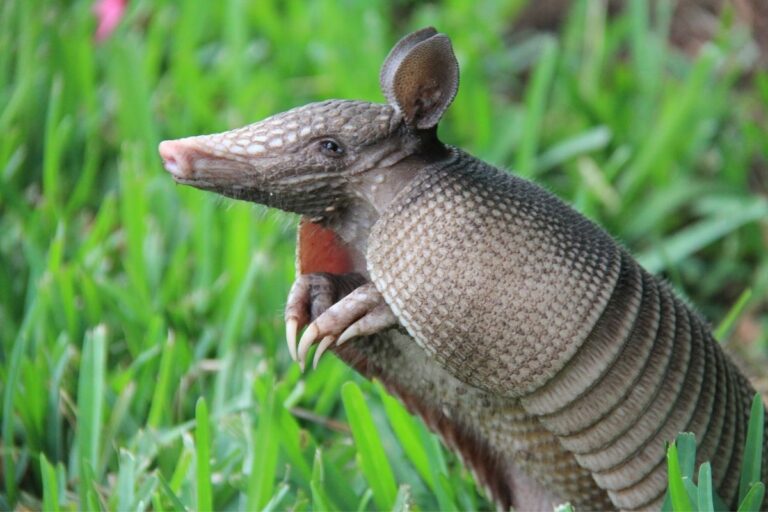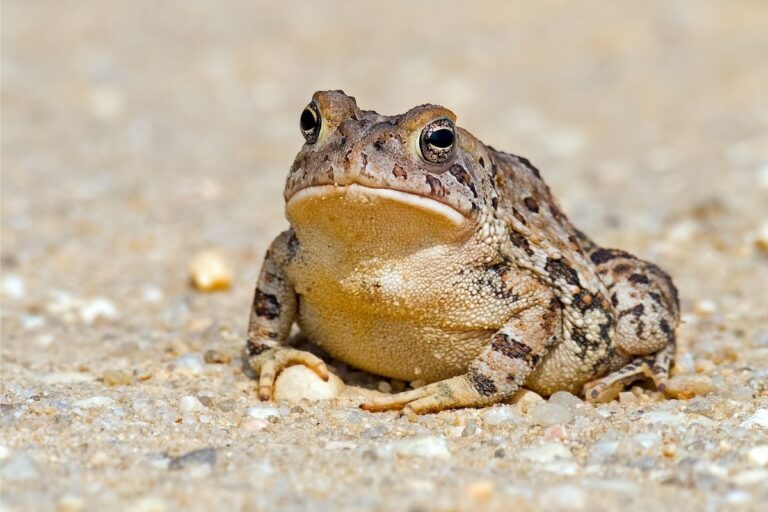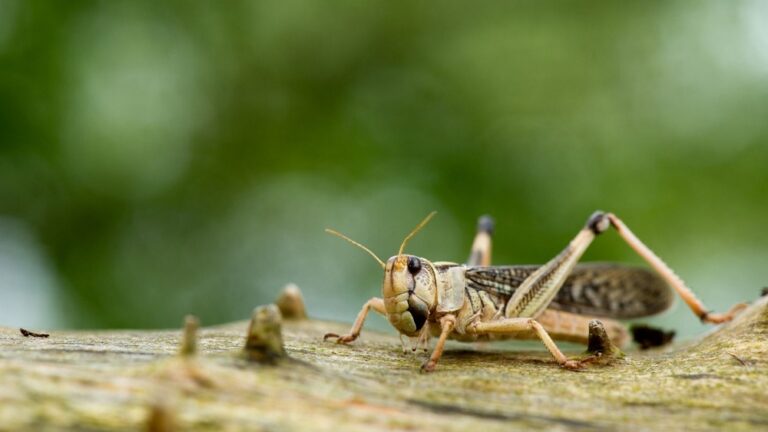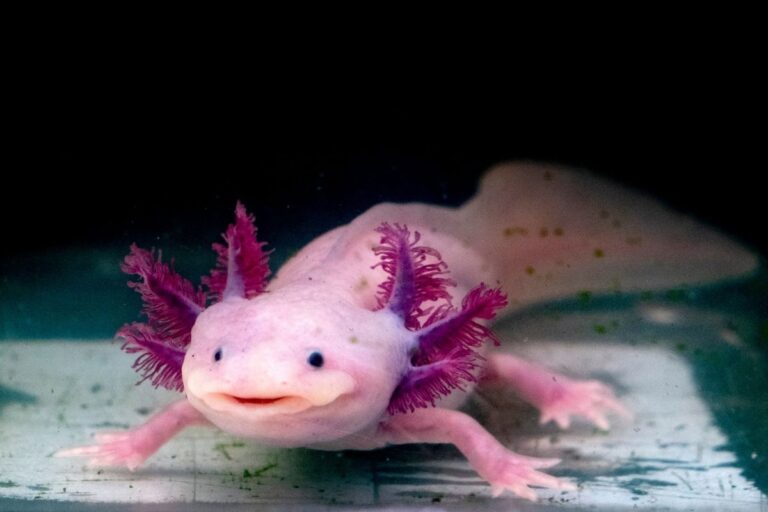Interesting Animal Facts About Lemurs
Last Updated on February 8, 2022 by
Lemurs come in many shapes and sizes. These primates, native to Madagascar, are well-known for their long tails, big eyes, and rambunctious attitudes.
But with more than 100 species and isolated to a single island, there are plenty of things about lemurs that you might not know.
From the curious ring-tailed lemur to the eerie aye-aye, lemurs are a wildly varied bunch. However, there are some absolutely fascinating things that these animals share that truly make lemurs stand out against the crowd.
To help you learn a bit more about these amazing creatures, we’ve collected 15 fun, interesting, and some downright strange facts about lemurs!
So let’s get right into it, shall we?
15 Fun Facts About Lemurs
1. Lemurs Are Native To Madagascar
The only place lemurs are found in the wild is in Madagascar. Without threats from major predators, lemurs have been able to flourish.
They also don’t have much competition for food, and their diets primarily consist of fruit, leaves, and tree sap.
If your mind jumps to King Julien from the movie Madagascar when someone mentions the word lemur, now you know where the association comes from.
2. They Can Live Up To 20 Years Old
Lemurs have fairly short lifespans for primates. Larger primates such as chimpanzees and orangutans can live for much longer due to their size, but the smaller lemurs only have an average lifespan of 15-20 years in the wild.
That said, lemurs in captivity are able to live up to 30 years old!
3. They Are Incredibly Intelligent
Like many other primates, lemurs are very intelligent. Studies have shown that lemurs are capable of communicating with each other, can solve simple puzzles, and are even able to understand simple math!
Although their cognitive skills haven’t been studied as much as other primates, it’s clear that lemurs can be just as intelligent as our other distant relatives.
Smarter lemurs are also shown to be more popular and respected amongst other lemurs.
Lemurs that were able to complete puzzles and challenges in studies were shown to receive more attention and better treatment from their peers, including an increase in being groomed without being expected to reciprocate.
4. Lemurs Are Some Of The Only Animals That Can Have Blue Eyes
Not many animals naturally have blue eyes. Blue eyes are caused by a lower amount of melanin, the pigment that determines the color of eyes, skin, and even hair.
Many animals don’t have blue eyes due to the disadvantages they cause in terms of light sensitivity and stealth, among other factors.
Lemurs are one of only two non-human primates that can have blue eyes; the other species is the blue-eyed spotted cuscus, which is native to Indonesia.
5. Their Name Means ‘Evil Spirit Of The Dead’
The name ‘lemur’ comes from the Latin word ‘Lemures’. In ancient Rome, lemures referred to wandering spirits that were typically malevolent.
While lemurs definitely aren’t evil, their small frames, nocturnal habits, and large eyes shed a bit of light on how they might have gotten their name.
6. There Are Over 100 Species Of Lemur
With around 112 species of lemur in the world, lemurs come in all sorts of shapes and sizes. Because of how many species and subspecies there are, lemurs show a range of different behaviors depending on their species.
They are also the world’s oldest living species of primate, with estimates placing them around 65 million years old.
7. The Smallest Species Of Lemur Only Weighs An Ounce
While most lemurs are fairly small, the Madame Berthe’s mouse lemur really takes the cake.
These tiny animals weigh just over an ounce, and at their full size, they grow to a maximum size of 7.5 inches long (with at least two-thirds of that body length made up by their tail).
8. The Biggest Species Can Weigh Up To 20 Pounds!
Other species of lemur can be much larger. The indri is the largest species of lemur, weighing over 20 pounds and with a head and body length of over two feet.
Their tails, on the other hand, are much smaller than other species of lemur and only reach lengths of around 2 inches.
In the past, there were much larger species of lemur. Evidence shows that around 500 years ago there were lemurs the size of gorillas on Madagascar.
However, these have since gone extinct, likely due to a loss of habitat or hunting.
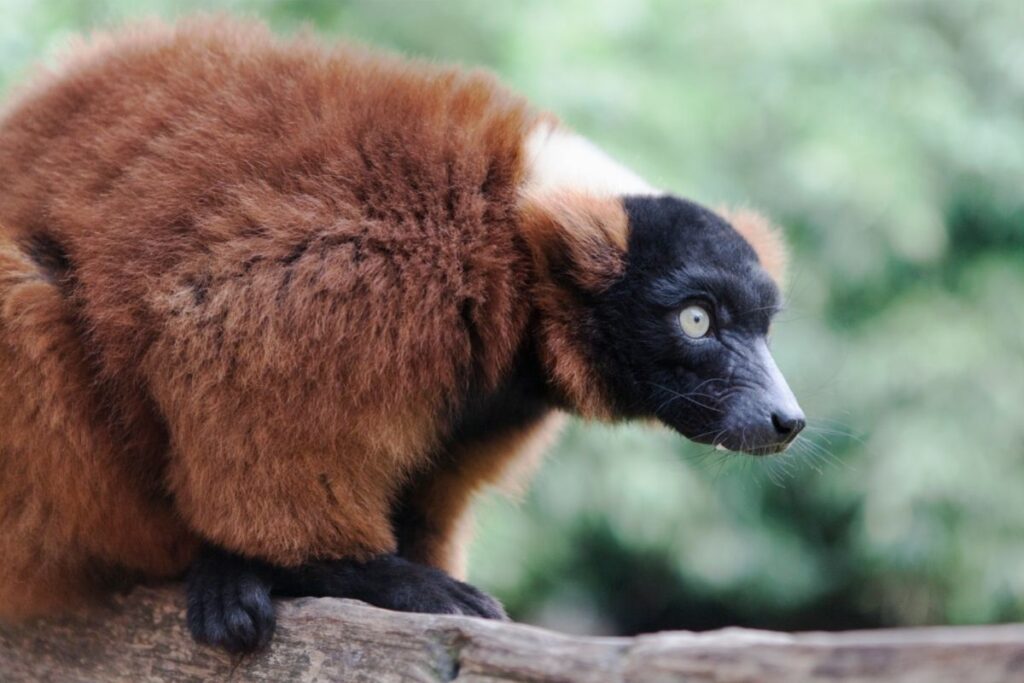
9. Some Lemurs Like To Sunbathe
Several species of lemur like to sunbathe in the morning to warm themselves up before they go foraging.
Species like the red-ruffed lemur and the ring-tailed lemur will sunbathe by standing upright and letting the sun warm their bodies up.
Because the fur on their bellies is shorter and thinner, this is where these lemurs will try and direct the most heat so it can spread to the rest of their body.
10. They Communicate Through Song (And Smell!)
As mentioned before, lemurs have ways of communicating with each other. These forms of communication vary by species, and there are several different ways that lemurs will ‘talk’ to each other.
Some species of lemur like to sing to communicate. Indris take this one step further and sing together in groups.
Not only that but they have been seen rehearsing their parts and synchronizing to make a chorus.
Other types of lemur communicate through smell. Ring-tail lemurs have scent glands on their wrists or chests that they will use to mark their territory and settle disputes through ‘stink fights’.
11. Lemurs Help Plant Forests
Lemurs are known as ‘creators of the forests’ and are considered to be the world’s largest pollinators. They spread seeds and pollen around the rainforest, which they typically pick up from their diets.
Lemurs disperse seeds around the rainforest through their droppings, which helps grow new trees in wider areas. Pollen and sap that catches on a lemur’s fur is also spread around their natural habitat, and some trees even rely on lemurs to pollinate them while they forage.
Ruffed lemurs in particular have thick fluffy fur that pollen clings to easily, ready to be deposited on local flora.
12. Lemur Society Is Matriarchal
Unlike most mammal species, lemurs are shown to have a primarily female-led society.
Female lemurs are frequently seen taking food from male lemurs, moving them out of better sleeping spots, and even hitting or biting their mates.
Female lemurs will also mark their territory in the same way that males do, and male lemurs will typically let female lemurs eat their fill of food before taking their share.
13. They Used To Be Native To Mainland Africa
While lemurs today are only found in the wild in Madagascar, they also used to exist in mainland Africa too, some 250 miles away.
However, lemurs that lived in Africa have long since gone extinct, most likely as a result of the higher prevalence of predators combined with greater competition from other primates such as baboons and mandrills.
Interestingly, lemurs are now also found living in the wild in the Comoros Islands, a volcanic group of islands off the coast of Madagascar.
The brown lemur and the mongoose lemur were initially introduced by humans and their numbers in the wild have since grown.
14. Lemurs Spend Most Of Their Time In Trees
Lemurs primarily live in trees and will spend much of their lives in the treetops.
They will sleep, rest, and forage in trees, where they are safe from any predators and able to reach their favorite foods in the high branches.
Lemurs will even give birth in the tops of trees! The reduced risk of predators or interference from other animals means that trees are safer for newborn lemurs and their mothers, and other lemurs are less likely to encroach on a female lemur’s habitat.
15. Lemurs Are The World’s Most Endangered Mammals
Unfortunately, the lemur population is decreasing at an alarming rate, and most species of lemur are listed as either threatened, endangered, or even critically endangered.
Many species of lemur have already gone extinct, and without strong conservation efforts, it’s likely that the rest will be following suit.
The main threat facing lemurs is the loss of habitat. More than 80% of Madagascar’s rainforests have been destroyed for logging and slash-and-burn farming.
Additionally, more and more of the lemur’s habitat is being destroyed to make room for expanding populations.
While conservation efforts from groups such as the WWF and Malagasy conservationists are trying to protect lemurs and their habitat, it is clear that there is still a lot more work to be done to keep these incredible animals safe.
Final Thoughts
So there you have it: 15 fun and interesting facts about lemurs. We hope you enjoyed learning a bit more about these fascinating animals.
Lemurs come in all shapes and sizes, with different temperaments and attitudes to boot. Despite only living in a small part of the world, the variety of lemur species just goes to show just how crazy nature can be.

